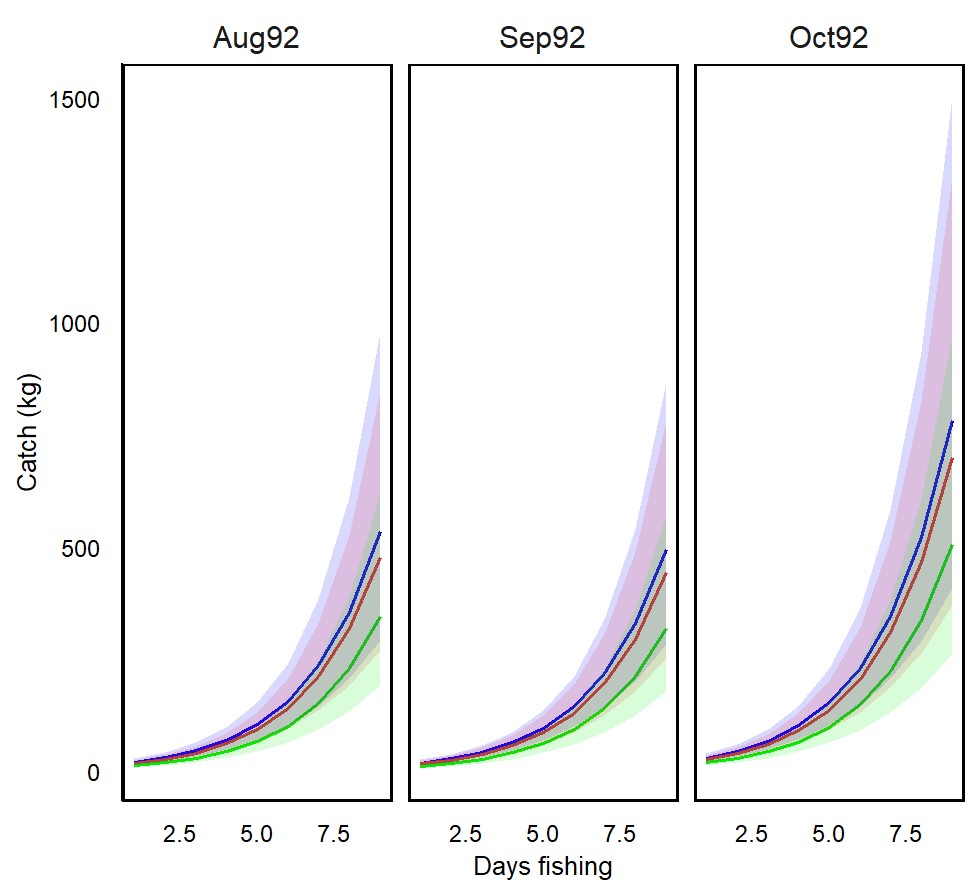Zero inflated model for CPUE standardisation
Introduction
Most fisheries datasets (scientific, commercial, recreational) have a lot of zero catches. These are fishing trips were no fish was caught. These zero catches are important but we need to fit appropriate models to accommodate them. Here we are introducing a model for zero inflated data. This model is coded in R language, so you will need R and RStudio to run it. If you need a brief introduction into R, check this introductory page from an online course on size based modelling.
For a basic introduction into the model and data, check out these slides. However, if you want to use the model we strongly recommend that you watch at least part 4 of our CPUE standardisation course, where the model and approach were presented in more detail.
Before proceeding with CPUE standardisation, first make sure you carefully assess and explore your data. We have prepared two courses and different scripts for data exploration, which you can find on our CPUE standardisation course webpage.
Model code
The main model code is available in this R markdown script and is demonstrated using this dataset. You can download the model and modify the script according to your needs. To look at the model code and outputs without having to run the code, you can click here. After applying the model you should be able to plot predicted catches as a function of fishing time (or other estimate of effort) and month or season, like in the plot below.

Application of the model
To better understand this model and its applications, we strongly recommend that you go through our CPUE standardisation course material, where we discuss different models and their strengths in greater detail. The course also explains how to simulate new datasets using estimated model parameters to assess the probability of obtaining as many zero entries as you have in your dataset (example output of these simulations is shown in the plot below).
